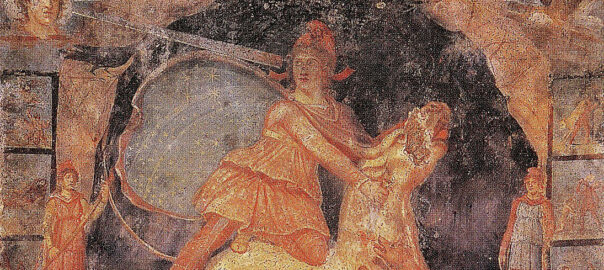
A Multicultural Story
The city is Rome. It is the first century after Christ, at midnight, the first moment of December 25th. The temples are lit up. Priests in white robes stand at the altar. Boys burn incense. The congregation is here to celebrate the birth of their Lord God. But Jesus Christ is not the name on their lips. When he was born this was already an ancient ceremony. It commemorates the sun god Mithras.
[Mithras] worshippers believed he had come from heaven to be born as a man in order to redeem men from their sins, and he was born of a virgin on December 25th. Shepherds were the first to learn of his birth ….
R.J. Condon, Our Pagan Christmas.
Contrast this picture with an account of early Christians during the same period gathered in the home of one of their members to study the sayings and teachings of Jesus, a teacher in the Jewish monotheistic tradition:
They were accustomed to meet on a fixed day before dawn, to sing antiphonally a hymn to Christ, as to a god, and to bind themselves by an oath, not to some wickedness, but not to commit acts of fraud, theft or adultery, not to falsify their word, not to refuse to return a deposit if called upon to do so. When they had done these things they used to depart and then come together again to take food—but food of an ordinary and harmless kind.
Pliny the Younger (Roman governor in 112 CE), Letters, 10.96-7
To understand the contrast between the earliest Christian gatherings and contemporary Christian ritual, we have to understand the historical context of the early church.
The Roman Empire was a melting pot of cultures, each with its own stories, myths, legends and beliefs. As we see throughout the human journey, stories are shared across cultures, and many of the ideas they contain are assimilated cross-culturally. Without doubt a story and how it is understood changes over time and place to fit contemporaneous circumstances.
All religious practices were tolerated by the Roman Empire and freely observed. The empire’s reach, influence, and soldiers spread from modern Sudan in the south, to the Scottish border in the north, from Morocco in the west to the Caspian Sea and Arabian Gulf in the east. It was a melting pot of cultures. Greek and Roman civilizations with their pantheon of gods mixed with others, the great civilizations of Egypt, for example, where the splendors of the Pharaonic tradition stretched back thousands of years, or Persia where Zoroaster was worshipped and absorbed into Greek and Roman society three or four hundred years before Christ. Numerous cults such as those of Attis, Adonis, Dionysis, and Venus were practiced. Each had its own stories, myths and legends and, as we have seen elsewhere in our human journey through the ancient world, elements from each were absorbed between traditions.
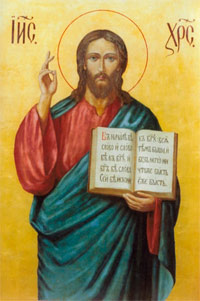
Also, since the time of Augustus, Romans were accustomed to Divine Emperors and their offspring, Sons of God, so it is not surprising that Jesus is presented as the Son of God who performed mighty works, which were the sign of the presence of God’s power and kingdom.
In ancient societies conception and birth were still somewhat magical events because people had no real biological knowledge, thus many stories are associated with miraculous births. In the Jewish tradition, for example, Isaac, a child of importance, was conceived of Sarah and Abraham when they were 90 years old. Divine conception was also well known in the Greco-Roman tradition.
Son of God
Writes Thomas William Doane in Bible Myths, and their Parallels in other Religions, “Immaculate conceptions and celestial descents were so currently received among the ancients, that whoever had greatly distinguished himself in the affairs of men was thought to be of supernatural lineage. Gods descended from heaven and were made incarnate in men, and men ascended from earth, and took their seat among the gods …”
“Son of God” had a number of meanings in the Hebrew Bible, but as the scholar Géza Vermès says: “It is universally agreed among experts that in Judaism the phrase is always used metaphorically; it never designates a person who is believed to be simultaneously man and God.”
Romans distinguished between a god, or deus, who was immortal and always has been a god, and a divus, or diva, a human being who had been elevated to divinity. At the death of Caesar, Octavian was divi filius, the “son of the divine one.” The Greeks, however, didn’t distinguish between immortal gods and human gods. Both were called theos, and the Greek equivalent for the Latin for a “son of god,” like Apollo, was the term theou huios.
John Dominic Crossan says, “These titles of Son of God and savior, etc, meant that the human being you were talking about brought such transcendental gifts to the world that he had to be considered divine. … A person was never elevated into divinity, however, until, like Augustus, they had done something major for the human race. And once they had done something extraordinary, their divinity was then retro-projected back into stories about their conception and birth, as well as into their genealogies and stories about their coming of age. But they are always writing backwards, after the fact. … They absolutely did that with Jesus. … I think people were able to walk carefully between what you and I want to know is literal or metaphorical, parabolic or historical.”
Thus, the Gospels’ miraculous and unusual stories were in a sense the expected biography that must accompany any unusual man who had done extraordinary acts.
As the historian and scholar Dr. Hugh Schonfield points out: “… among Gentile believers in Jesus as the true emperor it was not possible to hold him to be inferior in dignity to Caesar. So we find in the Gospels the term Son of God [the Imperial Divi Filius] conjoined with the Jewish royal title of Messiah. The late Gospel of John, composed not long after the reign of Domitian, who insisted that his governors address him in letters as ‘Our Lord and our God’ … makes Thomas address Jesus as ‘My Lord and my God.’”
The Virgin Birth
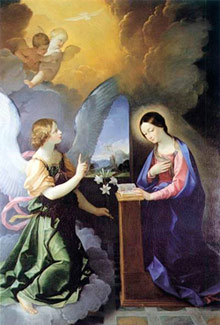
In order to authenticate Jesus as the fulfillment of the expected Messiah, the evangelists refer often to the Hebrew Bible. As scholars such as Géza Vermès point out, on occasion this leads to complications. The genealogies of Jesus in Matthew and Luke are not the same, yet both, in order to establish Jesus as the Jewish Messiah, have to establish that he was “of the house of David.” Matthew makes a point of describing Joseph as “the husband of Mary” and Luke states that he is the “supposed father.” “Since the Davidic descent [through the paternal line] is an indisputable factor, the claim that Jesus was the ‘son of the house of David’ acquires outstanding importance. However, establishing a justifiable claim to the Messianic title is one thing and the notion of the virginal conception of Jesus quite another. By endeavouring to combine the two, Matthew and Luke unwittingly confused the aim of the genealogies. For if in order to proclaim the virgin birth, they had to deny the real paternity of Joseph, they were unavoidably bound to undermine the royal messianic claim of Jesus,” says Géza Vermès in The Nativity–Passion–Resurrection.
Christians are familiar with this passage in Isaiah 7:14 (King James Bible): “Behold, a virgin shall conceive and bear a son, and shall call his name Immanuel.” But the Hebrew noun ha‘almah, a feminine noun with a definite article, translates as “the young woman,” not “a virgin.” Scholars agree that more likely it means “a young woman of marriageable age” (that is, old enough to bear a child) with no indication of whether or not she is a virgin.
Rising from the Dead
The idea of the Resurrection is also to be found in the legends of antiquity. The scholar Homer William Smith in his book Man and His Gods, writes: “For centuries the people of the Mediterranean had annually observed the death and resurrection of their gods. The Osirian drama, so beloved by the Egyptians, dated back certainly 25 and perhaps 35 centuries. Tammuz too, had died a violent death, to be brought back to life with the sprouting of the grain. So had Adonis been buried in a rocky tomb, mourned and declared resurrected and ascended unto heaven. So had Hercules died and been resurrected at Paul’s home.” (Tarsus in modern-day south-central Turkey.)

W.R. Halliday in his book The Pagan Background of Early Christianity tells us: “As in the Roman Catholic and Orthodox celebrations of the Passion and Easter, the dying god [Osiris] was often represented in effigy. The scene must indeed have been extraordinarily like that to be witnessed today in any church in Greece at Easter. The crowd of worshippers joined with passionate emotion in the lamentations over the death of their god, and burst into no less ecstatic joy, when the still small voice (lentu susurru) of the officiating priest announced the glad tidings of his resurrection: ‘Be ye of good cheer, ye initiates, for the god is saved. For he shall be to you a Salvation from ills.’ ‘We have found him! We rejoice together!’ was the jubilant cry which was raised at the culminating point of the ritual of the mysteries of Osiris.”
Says F.C. Conybeare (Prof. Theology, Oxford University) in Myth, Magic and Morals, “Such passages aid us to understand the rapid spread of the belief in the Virgin-Birth and Resurrection. Men’s minds were already full of similar beliefs, and the ground prepared for their reception. The Christians claimed acceptance of their myths because the pagan religion was already full of similar ones.”
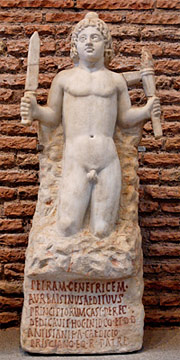
According to The Marketing of Christianity: The Evolution of Early Christian Doctrine, Institute for Cultural Research, “… it is easy to infer that early Christianity found itself facing stiff competition where miracles were concerned. In order to impress in the pagan world, a saviour had to contend with a host of gods and goddesses who made the miraculous ‘par for the course’. Healing was a particular attribute of divinity. Isis, Imhotep and Serapis of the Nile were all efficacious healers – as were Ishtar and Marduk of Babylonia and Astarte, the Phoenician moon-goddess. Thoth restored the eye of Horus with his spittle. Aesculapius, the Greek god of medicine and son of Apollo, healed the leper, the insane and the deaf and dumb. Horus performed great miracles, including raising the dead to life.”
In the series: Jesus and the Origins of Christianity
Further Reading »
External Stories and Videos
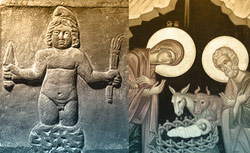
Sons of God and Virgin Births
The concepts of divine paternity and virgin-birth were familiar ones to people of the first century Roman Empire and throughout the ancient world.
